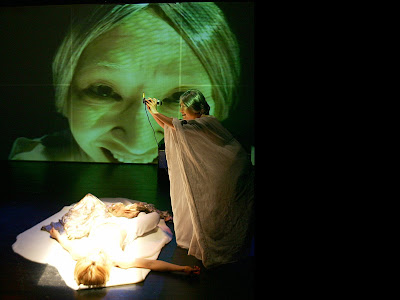

Chromatophores are often used for camouflage. This picture (courtesy of the Field Museum of Natural History) shows a winter flounder resting on a checkerboard pattern.
The chromatophores of cephalopods change size (expand and contract) as a result of activity of muscle fibers and the motor neurons that terminate at them. In crustaceans and amphibians, the chromatophores have a fixed shape. Color change comes about through the dispersal (darkening) or aggregation (lightening) of granules within the cell. This is under hormonal control.





























